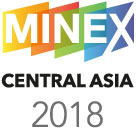- Home
- All Speakers
- Aida Kenshimova

Aida Kenshimova
Student
Kazakh-British Technical University
Speaker profile
I’m doing bachelor’s degree in “Geology and exploration of mineral resources” at KBTU, Kazakhstan Almaty. I’ve been involved in scientific activity for several years now, starting from the project “Advances in coalbed methane reservoirs integrated characterization and hydraulic fracturing for improved gas recovery in Karaganda coal basin, Kazakhstan” that was presented in Annual Caspian PetroCongress, Satpayev University, Almaty, 2017, where we took 2nd place; later that year we participated in poster contest in European Geoscientists Union (EGU) conference 2017, Vienna, Austria. Our project with some additions was presented in Oil & Gas Horizons IХ 2017, Moscow, where it won the first place. We`ve also participated and won first places in several regional intellectual games relating the Geology and Oil and Gas industry during "Astana Munay Fest" conference in Nazarbayev University, Astana, 2017; Annual Caspian PetroCongress, Satpayev University, Almaty, 2017.
Presentation summary
New method for express characterization of productive formations and improved hydrocarbon and ore recovery using advances in hydraulical fracturing, in situ leachingand for mining and petroleum operations
Hydraulic fracturing (HF) is the method that is widely applied in petroleum and mining operations in order to increase the permeability of productive zones. Our research is based on the estimation of potential influences of the parameters such as magnetic susceptibility and permeability on the successful HF performance. We found out that more permeable zones, that are more suitable for HF, exhibit low magnetic susceptibility values. We studied the application of this method on Coalbed Methane (CBM) recovery in Karaganda Coal Basin with extremely low permeability. We`ve also considered the its application on Uranium production by allocation of the most permeable zones for effective in situ leach mining (ISL).
We carried out probe measurements of magnetic susceptibility and permeability profiles for different CBM reservoir intervals. Results showed that our method leads to determination of coal reservoir`s high gas absorption zones, precise identification of the targets for HF in case of CBM, and the most permeable zones for ISL of Uranium.
